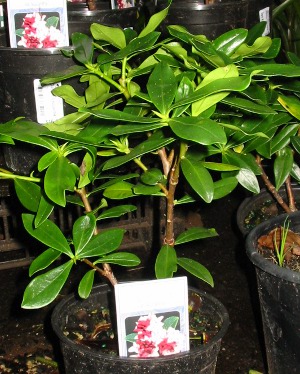|
Fragrant Daphne |
||
|
Daphne are renowned for their highly scented flowers from late winter to early spring. These classic wonders are a must have in every kiwi garden, perfect at the front door.
|
||
|
When to plant
Where to plant
Feeding
Watering Daphne like moist or damp conditions, especially over summer. They do not like wet feet, however, so avoid planting in heavy clay soils. Do not leave to dry out over summer months.
Pruning and shaping Daphne need very little pruning or shaping. Remove spent flowers and prune to shape if necessary by cutting down to the next set of leaves.
Plant Protection Modern Daphne suffer very little from pests or diseases. The most common problem people have with daphne is yellowing leaves. This is caused by either poor drainage, which may mean the plant needs relocating, or a nutrient deficiency, usually iron. This can be remedied by applying chelated iron, aluminium sulphate or flowers of sulphur |
    |
|
|
|
||
